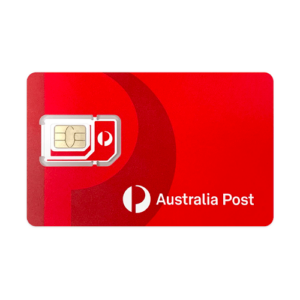Travelling across Europe and don’t want to have to stay out of touch or keep swapping SIMS? We’ve got you covered with our guide to the best international SIM cards and options for travelling in Europe.
The best SIM cards for travelling across Europe
Roaming in Europe

Europe is a super popular destination for Australian travellers, whether it’s for business purposes or simply to take in the hundreds of years of culture across the continent – not to mention all the very fine regional food options open to you. Which is great, right up until you want to call back to the office, check your messages or simply send a photo of that amazing meal you just had to social media.
That’s where having a smart approach to your travel SIM can save you serious money. While the really bad old days where watching one YouTube video could send you into bankruptcy on your return to Australian shores are (mostly) behind us, it’s still worth weighing up your options to get the best deal, whether you plan to use a full “Travel” SIM, a local SIM option or roaming from your existing telco.
It is worth noting that if your European travel is purely within the European Union (as distinct from the wider European continent) then the EU’s roaming rules around calls, texts and data apply – but it’s worth checking if a given provider has fair use provisions for roaming use in play for data, as those can sometimes obscure hidden fees.

Best eSIMs for Europe you can buy globally
Jetpac
Disclaimer: This pack only offers data roaming. No calls or SMS are included in the plan price.
You're probably already familiar with Jetpac's parent company Circles.Life, a popular SIM provider in Australia that offers huge data-per-dollar value. Jetpac Global is the company's global travel eSIM brand that offers instant connectivity in over 100 different countries.
Jetpac's Europe eSIM starts at just $1.50 for 4 days of coverage and includes 1GB of data to use in 28 European countries. That's fewer countries than Airalo, but most of the major regions are still covered.
Jetpac's 30-day plans start at $22 for 5GB of data and go all the way to 40GB of data for $94. Conveniently, Jetpac plans can be purchased and activated directly through the app (iOS and Android,) no matter where you are in the world.
Disclaimer: This pack only offers data roaming. No calls or SMS are included in the plan price.
Airalo’s business model is entirely eSIM focused based around its own app. For European travellers across a number of countries your best best is one of its Eurolink packages, covering 39 countries with coverage periods ranging from 7 days to 180 days and data inclusions from 1GB up to 100GB. If your travel needs are more constrained, Airalo also offers single country packages that may offer you more data for less money, so it’s smart to check beforehand.
The big advantage here is that you can set up the Airalo app and an account all before you ever step foot on a plane, giving you peace of mind that when you land you’ll be able to message home with confidence. The downside, however, is that you must have an eSIM-enabled handset to use Airalo’s services, which cuts out many budget phones and some older premium models entirely.
Best Europe Travel SIM you can buy in Australia
Australia Post International Roaming
Honestly, buying a full “travel” SIM designed for global use is always your worst bet, financially speaking. The complexities of offering global coverage add to the costs considerably, so if you’re buying on a budget they’re rarely the cheapest option.
Travel SIMs sell on their convenience, and if you are buying on a budget and you’re more concerned with calls and text coverage, it’s hard to go past Australia’s Post’s offering. Yes, we’re as surprised as you are, but the friendly local post office might just be your best bet for very low cost roaming indeed, at just $5 for 30 days of coverage.
$5 really isn’t much to spend at all, but you are getting an utterly bare-bones experience for your money, with just 50 minutes of calls – incoming and outgoing count – and 50 texts, plus 50MB of data. That last point is the crunchy one, because you’d absolutely have to pair that up with judicious use of lots of European hotel and public Wi-Fi across your trip.
Best Australian deal for Europe roaming
Vodafone $5 Roaming
Vodafone was the first Australian telco to really get on board with roaming charges that didn’t make you feel like you’d just been run over by a 747 when you returned home. Its $5/day surcharge to access your plan’s existing inclusions remains the gold standard for ease of use and ease of understanding, though it’s worth noting that its data capped speed plans do not include the endless speed capped data once you’ve gone through your primary provision. In those cases, you’ll get hit for $5 for each additional 1GB of data you need.
Here's a selection of Vodafone plans that support $5/day international roaming
The big catch with Vodafone $5 a day roaming is that it adds up over a lengthy European sojourn, so it’s best matched for when you might be quickly travelling through Europe for just a couple of days. Anything longer than that, and travel SIMs, local SIMs and travel eSIMs quickly become a more financially prudent option.
Vodafone aren’t your only option for roaming-friendly telcos within Australia, however. Here’s a range of alternative telco options that support roaming within Europe:
It can be highly beneficial to grab a local SIM in Europe for your travels, because typically local rates are cheaper and offer larger data inclusions than just about any travel SIM or roaming deal. There’s the added benefit for the EU specifically here too that member states (plus Iceland, Liechtenstein and Norway) all support cross-border roaming at no additional cost. Look for deals from some of the bigger cross-European Telcos such as Orange or Vodafone to get the best deal for the right price.
You’ll find no shortage of local SIM providers in every single major European airport if you favour convenience, though often they sell “tourist” specific SIMs with a slight surcharge in return for that easy pickup.
If you’re staying longer in a specific country, it’s worth researching local options and storefronts to see if you can get a prepaid SIM through them. Be careful, however, as you don’t want to get stung by a monthly plan that’s no use to you once you’ve left Europe, and some providers in some countries won’t accept credit card payments for some mobile services if the credit card itself isn’t local.
If your current handset doesn’t support eSIM, then sadly, the answer is no. You absolutely need the internal circuitry for eSIM support to be present on your phone in the first place.
If your phone does support eSIMs, then it’s quite easy to set up your eSIM before you travel. We’ve got a handy guide to setting up eSIMs for Apple iPhone and Android here.
The absolute cheapest way to “roam” when overseas is to throw your phone into a canal the moment you land. But that’s environmentally unsound, so don’t do it.
The second cheapest way is to use public Wi-Fi where available. In Europe, that’s a lot of places, including most accommodation venues. Instead of throwing your phone into a canal, switch off its roaming data (or data altogether) and switch to using Wi-Fi plus services such as Facetime, FaceBook Messenger and WhatsApp as your temporary “phone” number while you’re travelling. Use the offline maps capability of services such as Google Maps for navigation, load up on offline streaming services and music, and you can survive without having to pay anything extra at all for data.
Bear in mind, however, that public networks sit outside your control, and you never know who might be doing a little not-so-idle-not-so-friendly packet sniffing to get hold of your data. If you’re planning on relying on public Wi-Fi while travelling, investing in proper secure VPN access is a must.
Related Articles






